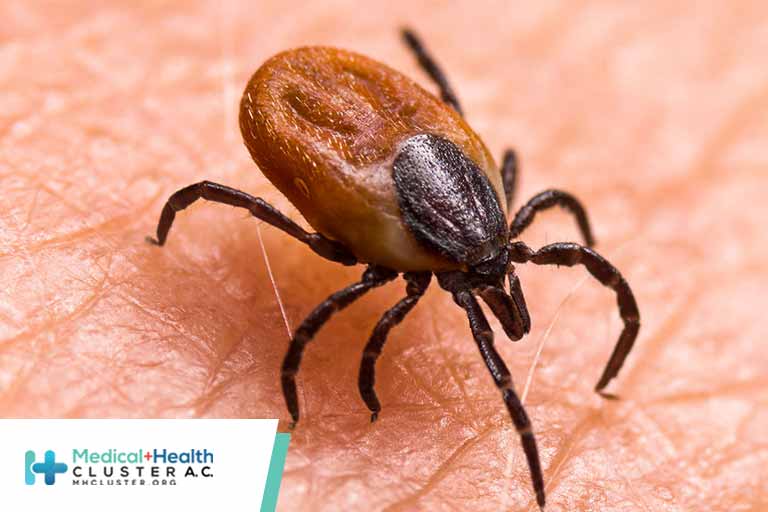En atención a la creciente preocupación sobre la confianza en...
Leer más
A hope for Lyme disease? New vaccine targets ticks

Erol Fikrig had spent 10 years pursuing a vaccine that would take a new approach to protecting people from Lyme disease, a growing bane in the United States: He wanted to target not the pathogen, but the tick that transmits it. Then, at a June 2019 meeting in Killarney, Ireland, he heard immunologist Drew Weissman of the University of Pennsylvania describe what was then a little-known technology: messenger RNA (mRNA) vaccines. In a flash, Fikrig saw a way forward. The Yale School of Medicine infectious disease physician collared Weissman and asked whether the technology might work against the deer tick that transmits Lyme disease in the United States. “I’d like to pursue that,” Fikrig recalls Weissman saying.
MRNA technology is now famous for delivering vaccines against COVID-19, and this week it achieved another distinction with an experimental Lyme preventive announced by the collaboration launched in Ireland. “It’s the first vaccine [intended for humans] against an infectious disease that does not target the pathogen,” Fikrig says. The mRNA vaccine, administered to guinea pigs, turned tick bites red and inflamed. The ticks fed poorly, fell off early, and often failed to transmit the Lyme-causing bacterium. Researchers hope the vaccine will one day work the same way in humans.
It’s “a beautiful study,” says Ruth Montgomery, a cellular immunologist at Yale who was not involved with the work. “Potentially a mechanism like this could be very important in a number of tick-borne diseases.”
Others are impressed by the team’s technological feat. The researchers packed 19 distinct mRNA snippets, each encoding a protein, or antigen, from deer tick saliva, into a single vaccine; COVID-19 mRNA vaccines deliver just one. “The mRNA vaccine saved us from COVID for sure,” says microbiologist Jorge Benach of Stony Brook University, who co-discovered Borrelia burgdorferi, the tick-borne spirochete that causes Lyme disease. “Now [Fikrig] is using stunning technology … with more than one antigen simultaneously. … I think it will be very very useful for future vaccines.”
In the United States, Lyme disease is the most common infection transmitted from animals to people, with up to 476,000 cases each year. B. burgdorferi triggers a flulike illness and trademark skin rash, and can also invade the brain, nerves, heart, and joints, sometimes leading to permanent nerve damage and arthritis. “For some people Lyme disease can cause major problems,” says Adriana Marques, who runs Lyme disease trials at the National Institute of Allergy and Infectious Diseases. Antibiotics can treat Lyme disease in its early stages, but a growing number of people—at least 1.6 million in 2020, according to one estimate—now suffer chronic consequences. No human vaccine is currently available, although one is in human trials.
That vaccine targets B. burgdorferi itself, but Fikrig thought a vaccine aimed at targeting the deer tick (Ixodes scapularis) might stymie the bacteria. Tick saliva secretes agents that help transmit the pathogen, but those proteins are “difficult to make in the lab,” Fikrig says. “The beauty of the mRNA vaccine is … you don’t need to make the protein—the body does that for you.”
In many people, tick bites go unnoticed, allowing ticks to feed uninterrupted. The new vaccine, with its multiple mRNA snippets that order host cells to make important tick salivary proteins, primed the guinea pigs’ immune systems to react to a tick bite. Within 18 hours after the ticks attached, most bites were transformed into red, inflamed, and likely itchy wounds, according to work published today in Science Translational Medicine.
That’s important because B. burgdorferi is rarely transmitted from tick to host before 36 hours into a tick meal that often lasts 4 days or more. And when scientists pulled ticks off soon after the bite site became inflamed—as a human might do—the transmission of B. burgdorferi was blocked.
“Everybody should look at these as very, very promising results,” says epidemiologist Sam Telford of Tufts University.
Still, much of the protection will probably hinge on whether people notice an itchy, red, tick bite and manage to pull the tick off early. When three infected ticks were attached and allowed to feed on guinea pigs until they were sated, 60% of vaccinated animals became infected, almost as many as control animals. And whether vaccinated people will react to the ticks as the guinea pigs do remains an open question. “Responding to the bite is really, really a cool thing,” says Uğur Şahin, CEO of BioNTech, which with Pfizer developed an mRNA vaccine against COVID-19. “We have to see if it holds true when translated into the human situation.”
Scientists note that a successful human vaccine, which would need a pharmaceutical company sponsor, could also protect people from other, rarer pathogens also transmitted by the deer tick, such as babesiosis. A vaccine might also induce a reaction to other tick species, such as those that transmit Lyme disease in Europe.
Benach thinks the new vaccine might also have to be loaded with mRNA that targets the pathogen. “I would like to see it supplemented with pathogen [mRNA] because it’s the pathogen that … makes you ill,” he says.
Telford, who has spent years working in communities with high Lyme disease burdens, hopes the vaccine will offer one solution to a growing problem: “People are fed up with tick bites. People are fed up with Lyme disease. They want something done.”
Créditos: Comité científico Covid




